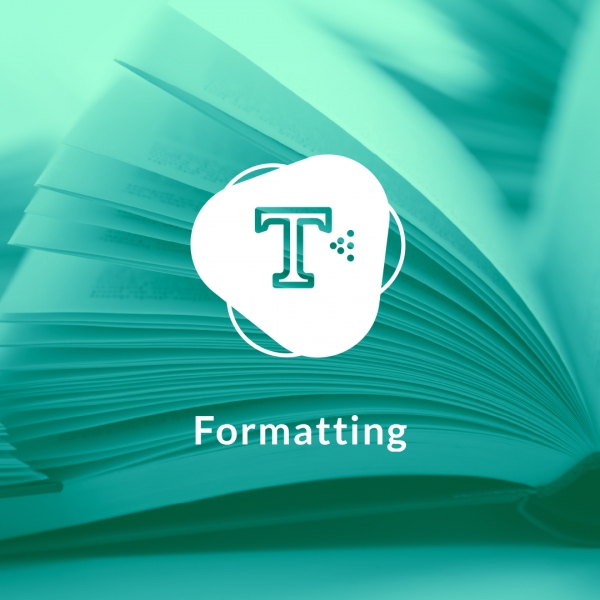Self-publishing has dramatically transformed the literary world, empowering authors to take control of the publishing process. Unlike traditional publishing routes where traditional publishers and publishing houses hold the reins from manuscript selection to market distribution, self-publishing places the author at the helm. This paradigm shift not only democratizes the process but also opens up a world of opportunity for writers of all genres.
The self-publishing landscape is diverse, with myriad services available that cater to various aspects of the publishing journey—from professional editing and eye-catching cover design to sophisticated marketing and global distribution. Platforms such as Amazon Kindle Direct Publishing (KDP), Apple Books, and others offer easy access to large audiences, while specialized services provide tailored support that can enhance the quality and reach of an author’s work.
Comparatively, traditional publishing involves a more selective and often lengthy process, where manuscripts must appeal to agents and publishers before they can reach readers. The benefits of traditional publishing include professional editing, design, and marketing support, often at no upfront cost to the author. However, it typically offers less royalty per book sold and less creative control over the final product.
Choosing the right self-publishing services is critical for several reasons. Firstly, the quality of these services directly impacts the professionalism and appeal of the final book. Poor editing or design can deter readers, no matter how compelling the content. Secondly, the right services can significantly enhance an author’s reach and sales through effective distribution and marketing strategies. Lastly, the choice of service can affect the financial return and overall satisfaction with the self-publishing experience.
For these reasons, selecting a self-publishing service is not just a logistical decision but a strategic one that can determine the success of an author’s publishing venture.
Understanding Different Self-Publishing Services
Self-publishing services are external or platform-based resources and companies that assist authors in the publishing route, transforming their manuscripts into published books. These services play various roles, ranging from basic logistical support to comprehensive publishing partnerships. The primary aim of self-publishing services is to bridge the gap between a writer’s raw manuscript and a professionally presented, market-ready book, accessible to readers worldwide.
Key Types of Services Offered
1. Editing: Quality editing is foundational in the self-publishing process. Services range from basic proofreading to correct grammatical errors to comprehensive developmental edits that focus on structure, plot, character development, and overall coherence. An expert writer and editor can transform a draft into a polished piece ready for the public eye.
2. Cover Design: The adage, “Don’t judge a book by its cover,” doesn’t hold in the publishing world. A book’s cover is often its first selling point, providing a visual representation of the content within. Professional cover designers create compelling, genre-appropriate covers that attract readers’ attention in a crowded marketplace.
3. Marketing: Even the best books need effective marketing to reach potential readers. Self-publishing services may offer marketing packages that include book tours, press releases, social media promotion, and more. These services help authors establish a presence in the market, attract media attention, and engage with readers.
4. Distribution: Distribution services ensure that a book is available to readers across multiple platforms and geographies. This includes listing the book on major online retailers like Amazon and Barnes & Noble, as well as making it available in various formats, such as print, e-book, and audiobook.
Vanity Publishers vs. True Self-Publishing Platforms
Authors must distinguish between vanity publishers and true self-publishing platforms. Vanity publishers often charge high fees to publish and sell an author’s work, offering package deals that include editing, design, and marketing. However, the cost significantly outweighs the value, as these publishers do little to ensure sales success, often lacking effective distribution channels. Moreover, authors usually retain less control over who sells their work and receive lower royalties.
In contrast, true self-publishing platforms, like Amazon KDP or Draft2Digital, provide tools and services that empower authors to self-publish themselves and market their books directly. These platforms typically operate on a model where the author retains full rights to the book and a higher percentage of sales revenue. They offer various levels of support depending on the author’s needs and budget, ensuring that authors can choose the best services for their situation without compromising their rights or royalties.
Understanding the different self-publishing services and choosing the right platform can profoundly impact the success of an independent author’s career. The selection should be made carefully, considering both the immediate needs and long-term goals of the business model and the author’s publishing strategy.
Your Publishing Journey Awaits – Start NowFactors to Consider When Choosing a Self-Publishing Service
Selecting the right self-publishing service is crucial for ensuring the success of your book. This decision should be strategically aligned with your goals as an author, whether you’re looking to maximize market reach, optimize royalties, or maintain control over the publishing process. Here are the key factors to consider when evaluating different self-publishing services:
1. Alignment with Publishing Goals:
The choice of a self-publishing service should directly support your objectives as an author. If your goal is wide market reach, look for services that offer extensive distribution networks that include major retailers and libraries. If maximizing royalties is your priority, consider platforms that take a lower percentage of sales, allowing you to retain more revenue from your book. For authors seeking control over every step of the process, services that offer customizable publishing packages and allow you to retain full rights to your work are preferable.
2. Cost Considerations:
Self-publishing can incur various costs, including editing, cover design, formatting, marketing, and distribution. Evaluate the pricing structures of different services to find one that fits your budget while still offering quality. Some platforms and companies may provide free ISBNs or low-cost printing options, which can significantly reduce upfront costs. However, always be wary of services with hidden fees or those requiring high upfront payments without a clear breakdown of what they cover.
3. Reputation and Track Record:
The reputation of a self-publishing service is a strong indicator of its reliability and quality. Research the self-publishing company’s history and track record in the industry. Look for services that are well-regarded by other self-publishing authors and have a history of producing successful books. Checking the publisher’s involvement in lawsuits or frequent complaints about service can also be illuminating.
4. Specific Service Offerings:
Different authors have different needs, so it’s important to choose a service that offers the specific support you require. Some services might excel in print and digital distribution but offer minimal marketing support. Others might provide robust promotional tools but lack in global distribution. Make a list of must-have services and use it to guide your decision-making process.
5. Reviews and Feedback from Other Authors:
One of the best ways to gauge the effectiveness of a self-publishing service is to read reviews and solicit feedback from authors who have used it. Online forums, social media groups, and self-publishing company blogs are rich resources where you can learn from the experiences of others. Pay attention to comments about the quality of customer service, the ease of use of the platform, and the actual sales and success stories associated with the service.
Considering these factors will help ensure that you choose a self-publishing service that not only meets your immediate needs but also supports your long-term success as an independent author. Make sure to invest time in thorough research and comparison to make an informed decision that will benefit your publishing journey.
Detailed Reviews of Top Self-Publishing Services
In the expanding world of self-publishing, several platforms stand out for their robust services and author-friendly features. This review covers three of the top best self-publishing services around: Amazon Kindle Direct Publishing (KDP), Apple Books, and IngramSpark. We’ll delve into their offerings, pricing structures, ease of use, and both the unique features and potential drawbacks of each.
1. Amazon Kindle Direct Publishing (KDP)
Services Offered: Amazon KDP offers digital and print publishing with a global distribution scope. The platform allows authors to publish both eBooks and paperback books, with additional services like KDP Select for exclusive content promotions in the Kindle store.
Pricing details: Publishing on KDP is free, and authors earn royalties up to 70% on eBooks and a variable percentage on paperbacks, depending on the publisher, list price, and distribution channel.
Ease of Use: KDP is user-friendly, with a straightforward dashboard that guides authors through the steps of publishing. The platform also offers detailed guidelines and free tools for book formatting and cover design.
Author Feedback: Authors appreciate the vast market reach and the relatively high royalty rates. However, some express concerns over the exclusivity requirement for enrolling in KDP Select, which restricts eBook sales to Amazon.
Unique Features and Drawbacks: KDP’s integration with Amazon’s marketplace provides immense exposure and automatic eligibility for Amazon Prime and Kindle Unlimited. The major drawback is the saturation of the marketplace, which can make it difficult for new authors to stand out.
2. Apple Books
Services Offered: Apple Books allows authors to publish directly to the Apple Books Store, offering eBooks accessible on all Apple devices. This platform emphasizes quality and reader experience, focusing solely on digital formats.
Pricing: Publishing on Apple Books is free, and authors receive 70% of the sales revenue without any hidden costs.
Ease of Use: The platform is less intuitive than others and requires the use of specific software like Apple’s Pages or a validated ePub file, which can be a hurdle for less tech-savvy authors.
Author Feedback: Authors praise the quality of the customer base, noting that Apple users tend to purchase books rather than just download free offerings. The major criticism involves the complexity of the publishing process and limited marketing tools compared to Amazon KDP.
Unique Features and Drawbacks: A standout feature is the aesthetic alignment with Apple’s high design standards, potentially increasing appeal to Apple users. A drawback is the limited reach—restricted to Apple users—and the absence of a print option.
3. IngramSpark
Services Offered: IngramSpark caters to both eBooks and print formats, with an extensive distribution network that includes bookstores and libraries globally. It offers print-on-demand services and is often used by authors looking to maximize their print distribution.
Pricing: IngramSpark charges a setup fee for each title ($49 for print, $25 for eBooks, or $49 for both) and offers competitive wholesale discounts to retailers, which authors can set themselves.
Ease of Use: The platform can be complex due to its professional focus, requiring more knowledge about publishing standards and wholesale pricing.
Author Feedback: The wide distribution network is highly valued, especially the ability to reach physical bookstores. However, the initial cost and complexity of setting wholesale prices can be daunting for new authors.
Unique Features and Drawbacks: The broad distribution is a major advantage, particularly for indie authors interested in print sales outside the Amazon ecosystem. The main drawback is the upfront cost and the steep learning curve for new publishers.
Your Publishing Journey Awaits – Start NowComparison Summary
Each platform offers unique strengths: KDP excels in eBook market reach, Apple Books offers a premium reader base, and IngramSpark provides extensive print distribution. Authors should choose based on their specific needs—whether they prioritize digital reach, design quality, or widespread print availability. Understanding these nuances will help authors find the right platform to publish and market their work successfully.
Navigating the Publishing Process
The journey from manuscript to published book involves several critical steps. Each phase requires attention to detail and effective collaboration with service providers. Here’s a step-by-step guide to help you navigate the self-publishing process smoothly, manage timelines, and set realistic expectations.
1. Finalizing Your Manuscript:
Before you consider publishing, ensure your manuscript is as polished as possible. This might involve several rounds of self-editing and revision to refine your story, clarify your ideas, and smooth out your prose.
2. Professional Editing:
Once your manuscript is ready, the next step is to work with a professional editor. This could be through your self-publishing platform if they offer editing services or an independent editor. There are different levels of editing to consider:
– Developmental editing focuses on the structure, character development, and plot.
– Copy editing addresses grammar, syntax, and usage.
– Proofreading catches typos and other small errors.
Effective communication is key when working with editors. Be clear about your vision and expectations, but also be open to suggestions and constructive criticism. Provide your editor with a comprehensive brief about your book, including style points and areas of concern.
3. Design and Formatting:
The next phase involves cover design and interior formatting—critical elements that affect your book’s marketability. Whether you hire a professional designer or use tools provided by your self-publishing service, ensure the design aligns with your genre and audience expectations.
When working with designers, similar to editors, clear communication of your vision and feedback is essential. Provide examples of book covers you like, or any concepts you have in mind. For interior formatting, decide whether you need simple text formatting or something more complex with images or special typography.
4. ISBN and Rights Management:
You’ll need an ISBN for your book, which can usually be obtained through your self-publishing platform. Some platforms offer it for free, while others may charge a fee. Ensure you understand the rights you are granting or retaining, especially regarding different formats and geographic distributions.
5. Publishing and Distribution:
Upload your manuscript and cover design to the self-publishing platform, set your price, and choose your distribution channels. Platforms like Amazon KDP, Apple Books, and IngramSpark provide various options for digital and physical book sales.
6. Marketing and Promotion:
Once your book is published, shift your focus to marketing and promotion. Utilize the marketing tools and services your platform offers, and consider additional strategies such as social media marketing, email campaigns, and book signings.
Understanding the Timeline:
The entire process from manuscript to published book can take anywhere from a few months to a year, depending on how long you spend in each phase. Set realistic timelines for each step, accounting for revisions and unexpected delays.
Managing Expectations:
Understand that self-publishing is a learning process. Initial sales may be slow, and feedback may not always be positive. Stay focused on long-term goals and continue refining your approach to both publishing and marketing.
Navigating the self-publishing process is a challenging but rewarding experience. By understanding each step, working effectively with professionals, and managing your timelines and expectations, you can increase your chances of success and satisfaction as a self-published author.
Marketing and Promotion for Self-Published Authors
Successfully marketing a self-published book is as crucial as writing it. Understanding the marketing services offered by self-publishing platforms and exploring additional promotional strategies can significantly enhance your book’s visibility and sales. This section outlines essential marketing services, effective book promotion, and strategies, and details the critical role of digital tools like social media, book reviews, and author websites.
Essential Marketing Services Provided by Self-Publishing Platforms
Most self-publishing platforms offer a range of marketing tools and services designed to help authors promote their books. These often include:
– Automated distribution to major online bookstores and possibly physical retailers.
– Metadata optimization services to help your book appear in search results, involving keywords, categories, and tags that align with your book’s written content and target audience.
– Promotional campaigns such as temporary price reductions or inclusion in special sales events, which can attract attention and money to the company and boost sales.
In addition to these, some platforms may offer paid promotional services, such as featured listings or advertising directly on the platform.
Tips on Additional Promotional Strategies
To further enhance your book’s reach, consider implementing these additional promotional strategies:
– Pre-launch campaigns: Build anticipation before your book’s release with teasers, cover reveals, and pre-order options. This can help generate initial reviews and spike early sales.
– Email marketing: Develop a mailing list to inform your readers about new releases, updates, and special offers. Personalized emails can create loyal readers and drive sales.
– Partnerships and publisher collaborations: Connect with other authors, bloggers, and influencers who can promote your book to their audiences. This can be particularly effective for reaching niche markets.
The Role of Social Media, Book Reviews, and Author Websites
– Social Media: Platforms like Facebook, Twitter, Instagram, and TikTok are invaluable for your business and reaching a broad audience. Regular posts, engaging content, and interactions with followers can build a community around your work.
– Book Reviews: Positive reviews are one of the most effective tools for selling books. Encourage readers to leave reviews on Amazon, Goodreads, and other platforms. Consider sending review copies to bloggers and reviewers who cater to your genre.
– Author Websites: A professional website serves as the hub for all information about your books and your company or author brand. Include a blog, news updates, a newsletter sign-up, and links to buy your books. SEO optimization for your site can also drive organic traffic.
Integrating these Elements
The key to successful marketing is integration. Coordinate your efforts across different platforms and strategies to create a cohesive marketing plan. For instance, use your social media to drive traffic to your author website, leverage your email list to boost participation in promotional events, give free resources, and use the buzz from book reviews to enhance your social media presence.
By effectively utilizing the marketing services provided by self-publishing platforms and engaging in additional promotional activities, you can significantly increase the visibility and sales of your self-published book. The combined use of digital marketing tools—social media, book reviews, and a professional author website—plays a pivotal role in building a successful self-publishing career.
Publishing with Spines
Spines stands out as the premier self-publishing platform, offering a blend of speed, affordability, and comprehensive support tailored to both novice and experienced authors. Our AI-driven production process not only cuts costs significantly below industry standards but also ensures your manuscript can become a published book in under 30 days. Every author enjoys the dedicated guidance of a personal production manager and a user-friendly dashboard that simplifies publishing, covering proofreading, editing, formatting, and cover design.
With Spines, your book will be available in all formats—print-on-demand, eBooks, and audiobooks—and distributed globally across over 100 channels, including leading retailers like Amazon and Barnes & Noble. Our commitment to your satisfaction is backed by a 7-day money-back guarantee, making Spines an unbeatable choice for your publishing needs. Sign up for free with Spines!
Your Publishing Journey Awaits – Start NowConclusion and Final Thoughts
Choosing the right self-publishing service is a pivotal decision that can significantly impact the success of your book. It’s essential to align the services with your specific goals, consider costs, and assess the reputation and offerings of each platform carefully. Additionally, effectively navigating the publishing process, from editing and design to marketing and distribution, is crucial. As you embark on your journey as an independent or indie author, take the time to research thoroughly, plan strategically, and engage with the community. Your informed choices and proactive efforts will lay a strong foundation for your publishing success and career growth.








